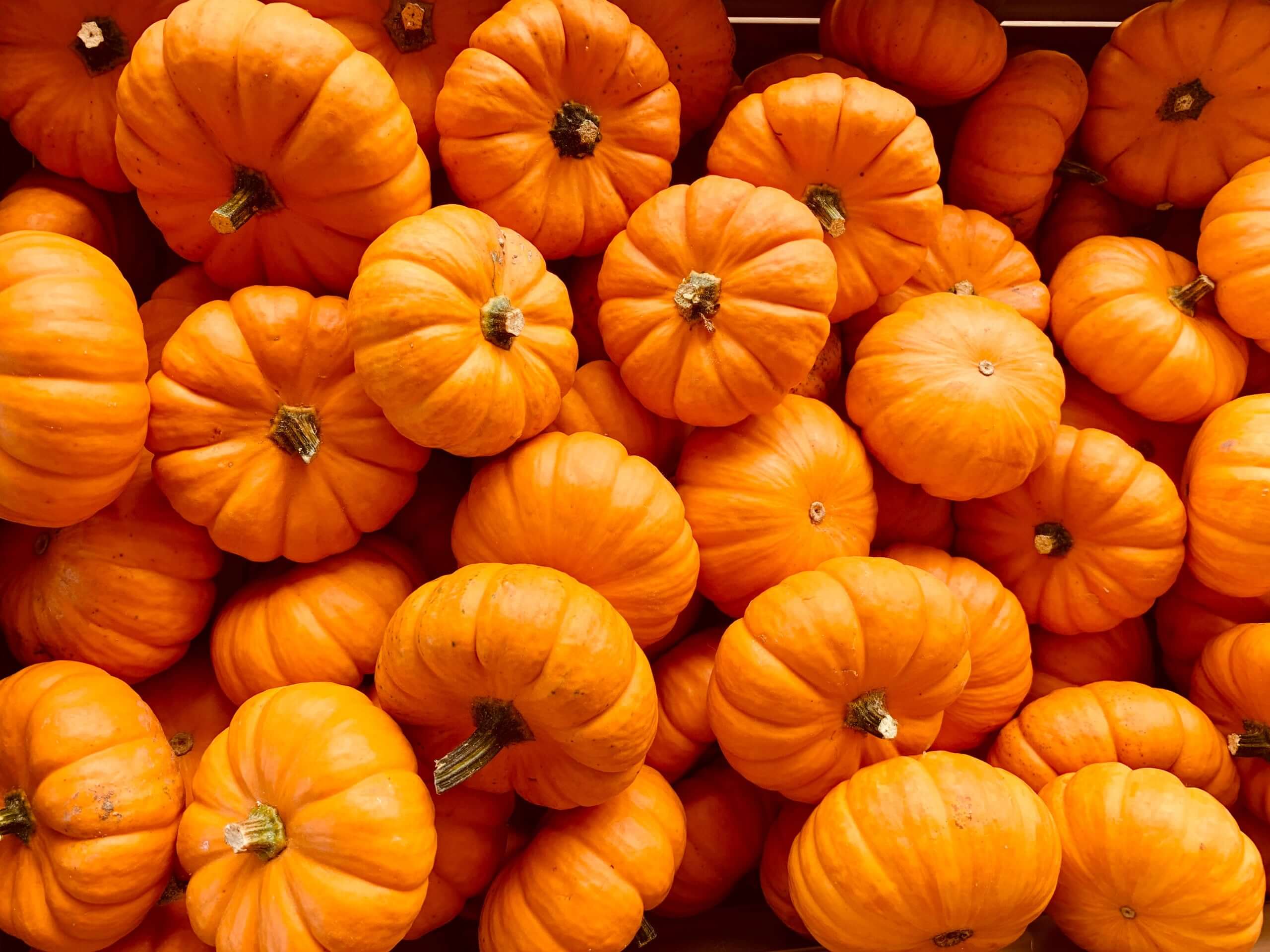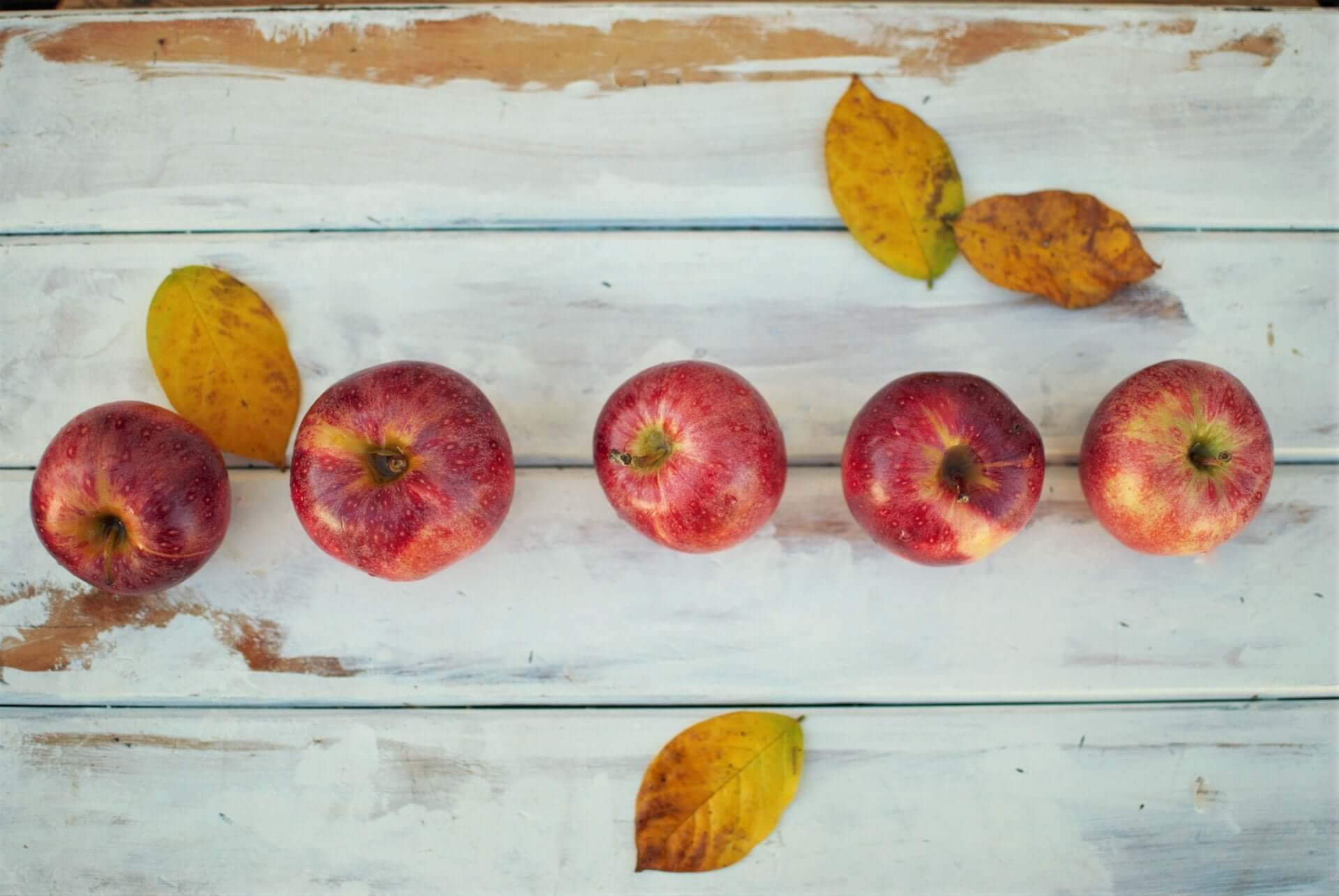
Inhaltsverzeichnis
Herbst-Gemüse: Diese Sorten sind saisonal und regional verfügbar
Und schon ist er wieder da, der goldene Herbst. Passend dazu stelle ich dir heute 5 Gemüsesorten vor, die jetzt Saison haben. Durch das Kochen mit saisonalem und regionalem Gemüse entdeckst du nicht nur die heimische Küche, sondern trägst auch zu einer geringen Klimabelastung bei.
Regionales Herbstgemüse
1. Kürbis
Wie kann es anders sein – Kürbis ist DAS Herbstgemüse schlechthin. Daher darf es auf dieser Liste auf keinen Fall fehlen!
Als Freiland-Produkt ist es in den Monaten September, Oktober und November erhältlich. Es bleibt lange frisch, lässt sich aber auch gut einfrieren!
Das orangene Gemüse punktet nicht nur durch seine leuchtende Erscheinungsform, sondern auch durch seine Inhaltsstoffe. Das enthaltene Beta-Carotin ist eine Vorstufe zum Vitamin A, was Haut, Haaren und der Sehkraft gut tut. Kürbis ist zudem reich an Kalium, Calcium und Eisen und zudem super gut bekömmlich. Trotz der hohen Nährstoffdichte ist Kürbis sehr kalorien- und fettarm.
Neben herzhaften Gerichten lässt sich Kürbis auch wunderbar in süße Speisen einbauen, wie in dieses Rezept für Kürbismuffins.
2. Pastinaken
Durch die Entdeckung der Kartoffel sind Pastinaken lange in Vergessenheit geraten. Dabei haben sie viele Vorteile. Zum Beispiel sind sie leicht verdaulich und durch ihren leicht süßlichen Geschmack sind sie auch bei Kindern beliebt. Das enthaltene Kalium ist gut für Herz- und Kreislauf. Sie haben einen relativ hohen Zuckergehalt, halten aber durch diese Kalorien lange satt.
Das Wurzelgemüse ist wohl am häufigsten in Suppen zu finden. Aber auch Eintöpfe und Pürees profitieren vom leicht süßlichen und würzig-nussigen Aroma der Pastinaken.

Photo by Charles Deluvio on Unsplash
3. Blumenkohl und Brokkoli
Technisch gesehen handelt es sich hier natürlich nicht um eine Gemüsesorte, sondern um zwei. Aber beide gehören zur großen Kohlfamilie, und ehrlich gesagt schaffe ich es so, später noch eine zusätzliche Gemüsesorte unterzubringen. 😋Aber zurück zum eigentlichen Thema.
Beide Gemüsesorten sind aus heimischem Anbau zwischen Mai und November verfügbar und dürfen meines Erachtens nach auch in Herbstgerichten nicht fehlen.
Brokkoli und Blumenkohl sind kalorien- und fettarm und reich an Vitamin C, Calcium und Ballaststoffen. Zudem sind sie leichter verdaulich als andere Kohlsorten wie Weiß- oder Rotkohl.
Da beide Kohlarten nicht gerade exotisch sind und bei uns allen bestimmt schon mal auf dem Teller gelandet sind, brauche ich glaube ich gar nicht mehr viel dazu zu sagen, außer: gesund und lecker! :)
4. Rote Bete
Ab den Sommermonaten dürfen wir uns über Rote Bete freuen, die bis einschließlich November bei uns angebaut bzw. geerntet werden. Bei uns sind sie als klassisches Herbst- und Wintergemüse bekannt.
Seitdem ich als Kind mal eine Nachspeise mit dem Gemüse probiert habe, die mir absolut nicht geschmeckt hat, hielt ich mich lange fern davon. Als ich dann vor ein paar Jahren nochmal Rote Bete probierte, war ich ganz überrascht davon, wie gut sie mir schmecken.
Schon in der Antike wurde Rote Bete als Heilpflanze eingesetzt. Tatsächlich enthält Rote Bete Folsäure und Eisen, welche die Blutbildung unterstützen bzw. Blutarmut vorbeugen. Das in dem Gemüse enthaltene Betanin sorgt nicht nur für die intensive Färbung, sondern hat auch wertvolle antioxidative Eigenschaften.
Rote Bete sind vielseitig einsetzbar und können roh oder gedünstet verzehrt werden. Somit macht Rote Bete sich nicht nur in Salaten oder als Ofengemüse gut, sondern auch in Suppen oder Smoothies.

Photo by FOODISM360 on Unsplash
5. Sellerie
Sowohl Stangen- als auch Knollensellerie sind in den Herbstmonaten wertvolle und gesunde Gemüsesorten. Zwar haben die beiden Sorten auf den ersten Blick so gut wie nichts gemeinsam. Wenn man sich die Inhaltsstoffe und gesundheitlichen Vorzüge aber einmal genauer anschaut, fällt auf, dass sich die Stangen- und Knollensellerie doch ähnlicher sind, als gedacht.
Während Staudensellerie einen eher dezenten Geschmack hat (der für einige aber dennoch gewöhnungsbedürftig ist), schmeckt Knollensellerie deutlich intensiver und würziger. Beide Sorten sind sehr fett- und kalorienarm. Wie anderes Gemüse ist auch Sellerie reich an Ballaststoffen und Vitaminen. Darüber hinaus hilft Sellerie gegen einen gereizten Magen und wirkt durch seine ätherischen Öle antibakteriell.
Zuletzt hat Sellerie durch seine Fähigkeit zur Entwässerung des Körpers große Beliebtheit erfahren. Besonders in der Fitnessbranche war es einige Zeit lang Trend, morgens ein Glas frischen Sellerie-Saft zu trinken.
Was ich an Sellerie so mag, ist, wie vielseitig er einsetzbar ist. Knollensellerie wird gerne in Suppen verwendet, Staudensellerie hingegen auch oft roh in Salaten. Mein Tipp für alle Vegetarier:innen / Veganer:innen: Knollensellerie nach dem putzen und schälen in Streifen schneiden, panieren und als “Schnitzel-Ersatz” verwenden! Super lecker. :)
Wenn du noch mehr über gesunde Ernährung, Achtsamkeit oder Nachhaltigkeit erfahren möchtest, schaue dir hier noch mehr spannende Blog-Artikel zu diesen Themen an.

Photo by Kelly Sikkema on Unsplash



























Leave a comment
This site is protected by hCaptcha and the hCaptcha Privacy Policy and Terms of Service apply.